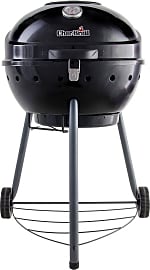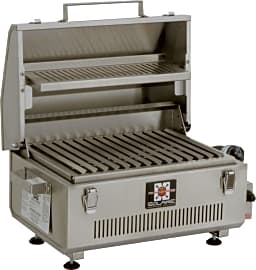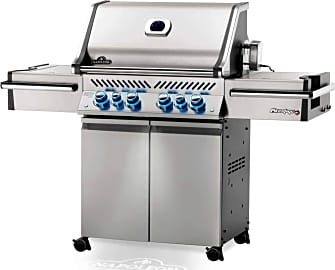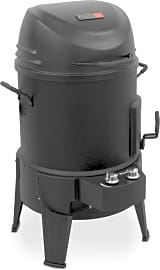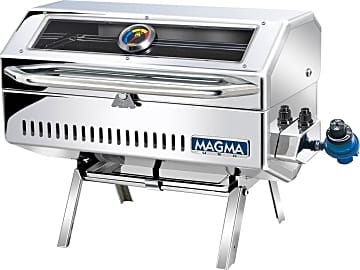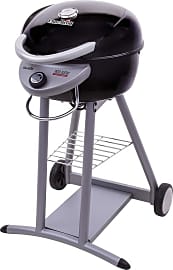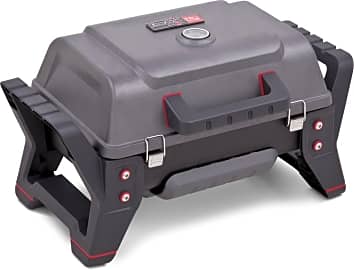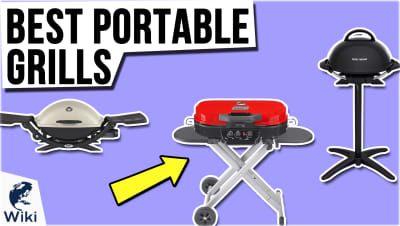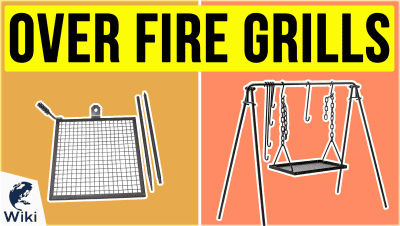The 8 Best Infrared Grills

This wiki has been updated 42 times since it was first published in April of 2015. If you find traditional barbecuing suffers from too many hot or cold spots, or that direct exposure to fire can cause your meats to dry out a little too quickly for your liking, you might be interested in one of these infrared grills. They use their initial heat source to increase the radiant temperature of a dedicated surface that then cooks all your foods to perfection. When users buy our independently chosen editorial recommendations, we may earn commissions to help fund the Wiki.
Editor's Notes
April 26, 2021:
A couple of our previous recommendations from Char-Broil and Napoleon are difficult to find now, so we've removed them. One of our newcomer items actually took the top spot; while the Char-Broil Performance Series 3-Burner isn't particularly fancy, it gets the job done well and costs considerably less than most infrared grills. We think that most users will be able to take of its advanced infrared technology without difficulty.
At the opposite end of the budget spectrum lies another new recommendation, the Napoleon Prestige PRO. This six-burner model can produce up to 1,800 degrees Fahrenheit on the side burners in addition to a pair of gas burners and a rear-mounted rotisserie element. All told, it's one of the most durable and high-performing grills out there, but it will set you back a significant investment.
March 24, 2020:
Assembly difficulties and availability issues caused us to remove the Char-Broil Patio Bistro 360 from our list, but the company still has a lot of offerings that utilize infrared cooking technology. A quick word on that technology: a lot of companies will employ IR rotisseries, side burners, racks, or main burners in any combination thereof, making it a little difficult to parse out which models offer what. We tried to clarify here and there, but interested parties should make doubly sure they know what they're getting with a given model.
New to our list is the Weber Summit Series S-470, which is an outstanding grill overall, but that couldn't climb any higher on our list due to the fact that its IR element is only there for the rotisserie. We also added the Blaze Grills Propane for anyone installing a grill in their kitchen or in a dedicated patio setup. Again, like the Weber, this one is only partially IR, but there's an adapter plate you can drop in if you want to spring for it that converts the primary cooking surface to infrared.
Special Honors
TEC Grills If you're looking for an ultra-premium appliance to complement a park-like backyard or saltwater swimming pool, TEC almost certainly has something for you. In particular, the Patio series looks works great and doesn't require permanent installation, making it the most versatile and popular of their lines. Be prepared, however, to spend quite a bit of money on one of these high-end options. tecgrills.com
Inventor Of The Infrared Grill
This gave him the idea to develop an infrared ceramic burner, which he patented in 1961.
The infrared grill has become a household term and has changed the world of grilling, but not many people have heard of its inventor, Bill Best. He is CEO and chairman of Thermal Engineering Corporation in Columbia, South Carolina. He first came up for the idea of the infrared grill when he was working on his doctorate at the University of South Carolina. He was up late at night developing a flame arrester for rocket guidance systems when he noticed that the ceramic plate on the arrester would turn bright red and emit high levels of radiant heat, also known as infrared.
This gave him the idea to develop an infrared ceramic burner, which he patented in 1961. He initially marketed it as a commercial burner for use in making radial tires and paint-curing systems. It wasn't until the early 1980s that Bill incorporated one of his ceramic infrared burners into a food grill.
Whether out of boredom or a stroke of genius, one night he decided to take some scrap metal from his plant and one of the ceramic burners to build a grill. He took it home to cook some food and discovered that not only did it cook food quicker, it also didn't dry out food as much as traditional grills. This was the beginning of TEC Infrared Grills.
His first grills used a 50/50 combination of infrared energy and hot air. This was because, while the ceramic burners had a number of benefits, they also had one major drawback; the heat couldn't be lowered very much. In applications where low heat was needed, a ceramic burner would burn the food. Combining both methods of cooking into his grills allowed for users to cook at a range of temperatures, while still enjoying the benefits of infrared cooking.
Bill is a lifelong inventor with more than 60 patents to his name. Nearly 80 years old now, he still regularly works 50 or more hours a week and often shows up at work in the middle of the night to continue working on new ideas. He may appear to be just like any average South Carolina guy who loves to grill steak while listening to country music, but unlike the average guy, his favorite book is "Mathematics for Scientists and Engineers.”
How Infrared Grills Work
Infrared red grills work by emitting infrared heat into the food being cooked. Infrared waves, are electromagnetic waves that are between microwaves and visible light waves on the electromagnetic spectrum. The different types of infrared waves are categorized by their frequency: near, mid, or far.
Near infrared waves are the kind generated by pushing the button on a TV remote control.
Near infrared waves are the kind generated by pushing the button on a TV remote control. They don't generate a noticeable amount of heat and aren't suitable for cooking. Far infrared waves do generate a significant amount of heat, making them ideal for cooking.
Charcoal and gas grills can only reach roughly 700 degree Fahrenheit, whereas infrared grills average around 900 degrees, and can reach as high as 1600 degrees. Charcoal and gas grills also cook food predominantly through convection, which is the movement of hot air. As the fire in charcoal and gas grills burns, it causes the air to heat up and rise, continuously circulating around the food. This constant flow of air is what causes food to dry out on a grill.
Infrared grills utilize the heat radiated from a solid surface to cook food. This heat is radiated in the form of far infrared waves. The heating element also heats the air in a similar manner to gas and charcoal grills, but circulates less air so the food can retain more of its natural moisture. The higher temperatures of infrared grills also allow for the food to be cooked quicker, with less time exposed to the circulating air.
Tips For Using Infrared Grills
As with more traditional grills, an infrared red grill must also be preheated before starting to cook food. This allows the grate to get hot, sterilizing it and expanding the metal enough so that the pores close, reducing the chance of food sticking. Unlike gas grills, which need to heat up for roughly 10 minutes, and charcoal grills, which often need 20 minutes or more, infrared grills are preheated and ready to cook in five minutes or less.
One should also reduce the heat setting they normally cook with on infrared grills by 30 percent.
Protein and vegetable cooking time must be reduced on infrared grills or the food will be overcooked. As mentioned previously, infrared grills cook at temperatures well above what traditional grills can reach. For his reason, the cooking on infrared grills takes about half of the time it takes on gas and charcoal grills. For example, a chicken breast can be fully cooked in roughly 10 minutes.
Until one is accustomed to the shorter cooking times of an infrared grill, it is best to keep an instant read grill thermometer on hand to ensure the food reaches the proper internal temperature.
One should also reduce the heat setting they normally cook with on infrared grills by 30 percent. So if you normally cook your steaks on high, start by setting your infrared grill to medium or medium high. It is easier to increase the heat without hurting the food than to decrease it.


